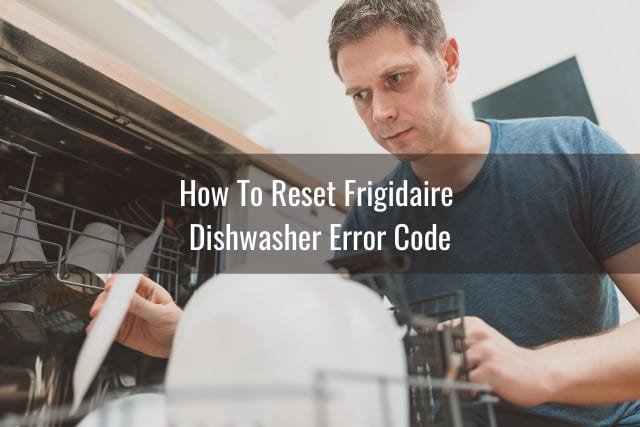
These error codes are like secret messages from your appliance, telling you it needs some TLC. The F2 error code can seem a little intimidating at first, but it’s actually your Frigidaire’s way of saying there’s a hiccup it needs your help to sort out. Most of the time, it’s nothing too complex and can be solved with a straightforward reset. Hang tight, and let’s unravel the mystery behind that blinking light and get your kitchen helper back in action.
Understanding the F2 Error Code
First off, let’s delve into what this F2 error code really means. In the world of Frigidaire dishwashers, an F2 error typically indicates a problem with the water draining system. Imagine it as a traffic jam in your machine’s piping. It’s likely that water isn’t being expelled as quickly as it should be, which can cause the machine to stall and alert you with this code.
Why does this happen, you wonder? It’s often due to blockages or kinks in the hose, or sometimes an issue with the pump itself. Blockages can occur from food particles or debris building up over time, similar to leaves clogging a drainpipe. And if your dishwasher isn’t able to empty water effectively, it halts operation to avoid flooding your kitchen floor — a considerate move, indeed.
Understanding this is crucial because it shapes how you respond to the problem. Knowing that the issue is drain-related can guide your troubleshooting steps. So, let’s keep this in mind as we proceed toward resetting your dishwasher and tackling this code head-on.
Preparing to Reset Your Frigidaire Dishwasher
Before you jump into the reset, a little prep work can go a long way. Think of it as tidying up the workspace before starting a project. First, make sure the dishwasher is turned off. You can do this by pressing the power button or unplugging it from the electrical outlet. Safety first, right? It’s always best to handle electrical appliances with care.
Next, let’s check for any visible obstructions. Open the dishwasher and inspect the bottom for any bits of food or utensils that might have slipped through the cracks. Imagine your dishwasher as having a tiny ecosystem of its own, and these foreign objects could be clogging its waterways. Remove anything that’s not supposed to be there to ensure the path is clear for water to flow freely.
Lastly, take a moment to inspect the drain hose behind the machine. It should be free of twists, bends, or kinks, much like a garden hose. Straightening it out can prevent blockages and allow your dishwasher to drain effectively. Once everything’s in good shape, you’ll be ready for the next step.
Performing the Reset
Now, let’s move on to the main event: resetting your dishwasher. Think of this like hitting the refresh button on your computer when it’s lagging. Start by making sure the dishwasher is completely turned off — if you unplugged it earlier, now’s the time to plug it back in. Close the door securely because an open-door reset won’t do the trick.
Once plugged in, press the “Cancel” button on your dishwasher. Hold it down for about 3 seconds until you see the lights blink. This action is like telling your dishwasher, “Alright, let’s start over.” After the lights blink, your machine should start a short drain cycle to empty any water inside. This is a good sign!
After the drain cycle, go ahead and press the “Start” button to initiate a new wash cycle. Your dishwasher should begin running as usual without the pesky error code. If it does, fantastic! You’ve successfully communicated with your machine and solved the issue.
When Resets Aren’t Enough
Sometimes, despite your best efforts, the F2 error might linger like an unwanted guest. If the reset doesn’t work, it may indicate a deeper issue that requires more than just a quick fix. It could be a problem with the drain pump or even a more complex blockage within the internal components. Think of it like a car engine needing a mechanic’s touch.
In cases like these, it’s wise to consult the dishwasher’s manual for any specific troubleshooting tips or to reach out to a professional technician. They have the experience and tools to dig deeper into the problem without causing additional damage to your appliance.
Meanwhile, as a preventative tip, make it a habit to clean your dishwasher’s filter regularly. It’s a bit like brushing your teeth to prevent cavities. Keeping your appliance clean can help stave off future F2 errors and keep everything running smoothly.
In conclusion, error codes might seem daunting at first, but they often point to simple, fixable issues. By understanding the message, preparing your appliance, performing a reset, and knowing when to call for help, you’ll be back to smooth operation in no time. Just remember to keep your dishwasher clean and free-flowing to enjoy many more hassle-free washing cycles.